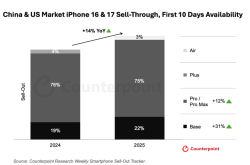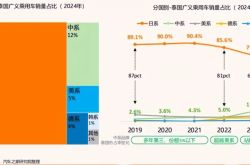Empowering Growth: Yangtze River Delta Thrives with 72 National-Level SME Characteristic Industrial Clusters
![]() 06/25 2025
06/25 2025
![]() 738
738
Introduction
On June 27, 2025, the "United Nations MSME Day Theme Event," co-hosted by the United Nations Development Programme and the China International Center for Economic and Technical Exchanges, will shine a spotlight on green innovation and resilient development, reigniting industry focus on micro, small, and medium-sized enterprises (MSMEs).
SMEs serve as the cornerstone of regional economic development, playing a pivotal role in invigorating market dynamics, fostering innovation and upgrading, and enhancing employment and livelihoods. Particularly, SME industrial clusters in counties represent a vital organizational form and vehicle for driving high-quality SME development, forming an integral part of the regional economy.
Since 2022, the Ministry of Industry and Information Technology has consecutively released lists of national-level characteristic industrial clusters for SMEs. To date, China boasts 300 such clusters.
Table: Recognition Criteria for National-Level SME Characteristic Industrial Clusters
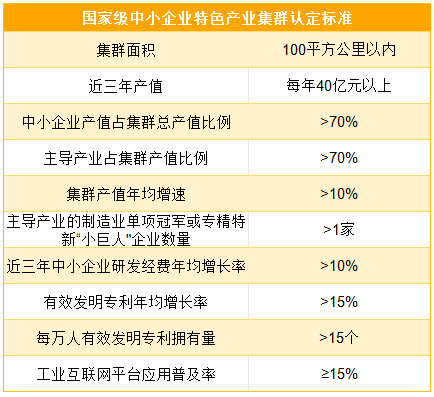
Source: Compiled by Flintstone from public information
01 Yangtze River Delta Structure
In terms of quantity, the Yangtze River Delta region accounts for 24% of national-level SME characteristic industrial clusters, nurturing a total of 72 across 30 cities, thereby forming a vibrant industrial innovation corridor.
Shanghai leads with 14 clusters, followed by Ningbo with 6, ranking first among second-tier cities. Changzhou, Hefei, Jiaxing, Nanjing, Shaoxing, Suzhou, Taizhou, and Wuxi each host 3 clusters, forming the third tier. Cities like Anqing, Huzhou, Jinhua, Lu'an, Wenzhou, Wuhu, Xuancheng, and Yangzhou occupy the fourth tier with 2 clusters each.
 Figure: Top 10 Cities with the Most SME Characteristic Industrial Clusters in the Yangtze River Delta. Source: Flintstone Industry Data Center
Figure: Top 10 Cities with the Most SME Characteristic Industrial Clusters in the Yangtze River Delta. Source: Flintstone Industry Data Center
An industry-specific analysis reveals that high-end equipment manufacturing, new-generation information technology, new materials, and biopharmaceuticals dominate the recognized clusters, further reflecting the current industrial structure characteristics and development trends of the Yangtze River Delta.
Table: Distribution of SME Characteristic Industries in the Yangtze River Delta
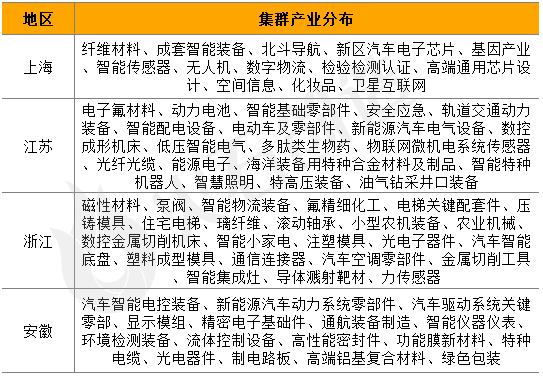 Source: Flintstone Industry Data Center
Source: Flintstone Industry Data Center
02 Policy Empowerment
To bolster the development of SME characteristic industrial clusters, the national government has issued a suite of policy documents, including the "Law of the People's Republic of China on the Promotion of Small and Medium-sized Enterprises" and the "Several Opinions on Further Promoting the Development of Small and Medium-sized Enterprises." Both central and local governments have established special funds to support cluster construction and development, offering financial subsidies, tax incentives, financing assistance, and other forms of aid.
Table: Selected Policies Promoting SME Characteristic Industrial Clusters
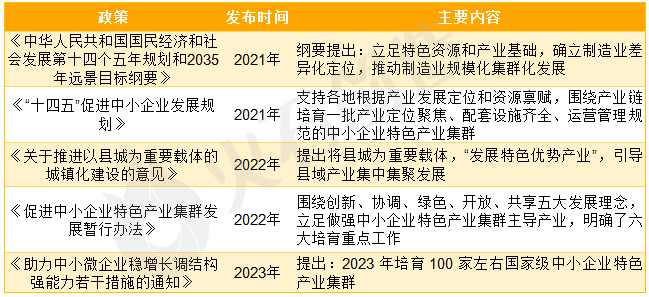 Source: Flintstone Industry Data Center
Source: Flintstone Industry Data Center
Provinces and cities within the Yangtze River Delta have formulated tailored policy documents to foster SME characteristic industrial clusters, enhancing their specialization, distinctiveness, and intensification.
1. Shanghai
In 2024, Shanghai enacted the "Administrative Measures for Promoting the Development of Characteristic Industrial Clusters for SMEs in Shanghai," stipulating rigid conditions such as a focus on leading industries, achieving an output value exceeding 3 billion yuan in the past three years, and ensuring SME output value accounts for more than 50%. Clusters must also demonstrate an average annual increase in R&D expenditure of over 5% in the past three years and establish industry-university-research collaboration mechanisms. A cluster cultivation database supports clusters in accessing financial support, including city-specific SME development funds. In 2024, Shanghai recognized 11 SME characteristic industrial clusters.
The "Several Measures for Promoting the Development and Growth of Specialized, Refined, Innovative, and Unique SMEs" released in 2025 emphasizes cultivating specialized, refined, innovative, and unique SMEs in new sectors worth over 100 billion yuan, fostering SME characteristic industrial clusters in niche industries, and rewarding those with outstanding cultivation outcomes and agglomeration effects.
2. Jiangsu
Jiangsu Province issued the "Administrative Measures for Promoting the Development of Characteristic Industrial Clusters for SMEs" in March 2023, pinpointing "stimulating county economy vitality" and "enhancing SME core competitiveness, improving industrial chain and supply chain resilience, and supporting key links" as key objectives. It prioritizes supporting the provincial-level characteristic industrial cluster layout centered around the province's 16 advanced manufacturing clusters and 50 key industrial chains.
Jiangsu aims to cultivate and recognize approximately 100 characteristic industrial clusters province-wide during the 14th Five-Year Plan period. In the past two years, Jiangsu has recognized 75 provincial-level SME characteristic industrial clusters.
3. Zhejiang
Zhejiang Province selects and establishes core and collaborative zones for "Made in Zhejiang" provincial-level characteristic industrial clusters among the 15 provincial-level clusters within the "415X" advanced manufacturing clusters, serving as a crucial means for provincial-level cluster construction.
The "Action Plan for the Construction of Zhejiang's '415X' Advanced Manufacturing Clusters (2023-2027)" released in 2023 outlines the goal of forming a "415X" advanced manufacturing cluster system by 2025, comprising 4 world-class advanced industrial clusters, 15 "Made in Zhejiang" provincial-level characteristic industrial clusters, and a batch of high-growth "new star" industrial clusters. The "Regulations of Zhejiang Province on Promoting the Development of Small, Medium, and Micro-sized Enterprises" explicitly promotes the healthy development of SME-agglomerated industrial clusters. The "Several Opinions on Further Promoting the High-quality Development of Specialized, Refined, Innovative, and Unique SMEs" issued in 2024 supports the cultivation of a batch of SME characteristic industrial clusters in niche industries across the province.
4. Anhui
Anhui Province enacted the "Interim Measures for Promoting the Development of Characteristic Industrial Clusters for SMEs in Anhui Province" in 2023, aiming to recognize 60 provincial clusters during the 14th Five-Year Plan period. It focuses on constructing a "leading enterprises + supporting enterprises" ecosystem, actively supporting clusters in integrating into key industrial chain construction through "one chain, one policy," and promoting high-quality development via industrial agglomeration. From 2023 to 2024, Anhui recognized a total of 44 provincial-level SME characteristic industrial clusters.
In 2024, Anhui Province also issued the "Guiding Opinions on Promoting the High-quality Development of County-level Characteristic Industrial Clusters (Bases)," emphasizing the agglomerated development of county-level clusters and adhering to the growth path of "leading enterprises - industrial chains - industrial clusters - industrial ecology." By 2030, it strives to cultivate at least one cluster with operating revenue exceeding 10 billion yuan in each county (city), totaling around 100 county-level manufacturing sector clusters. Currently, Anhui boasts a county-level characteristic industrial cluster system featuring a tiered distribution of scales and division of labor among large, medium, and small enterprises across 59 counties (cities).
Under the precise empowerment of a series of policies, SME characteristic industrial clusters are emerging as a significant force in driving regional economic high-quality development. As policies continue to deepen and clusters expand, these clusters will play an even more critical role in invigorating market dynamics, fostering innovation and upgrading, enhancing employment, and improving livelihoods, injecting robust momentum into regional economic prosperity and development.
Author | Weng Jianping, Flintstone
Reviewed by | Yin Li, Flintstone


